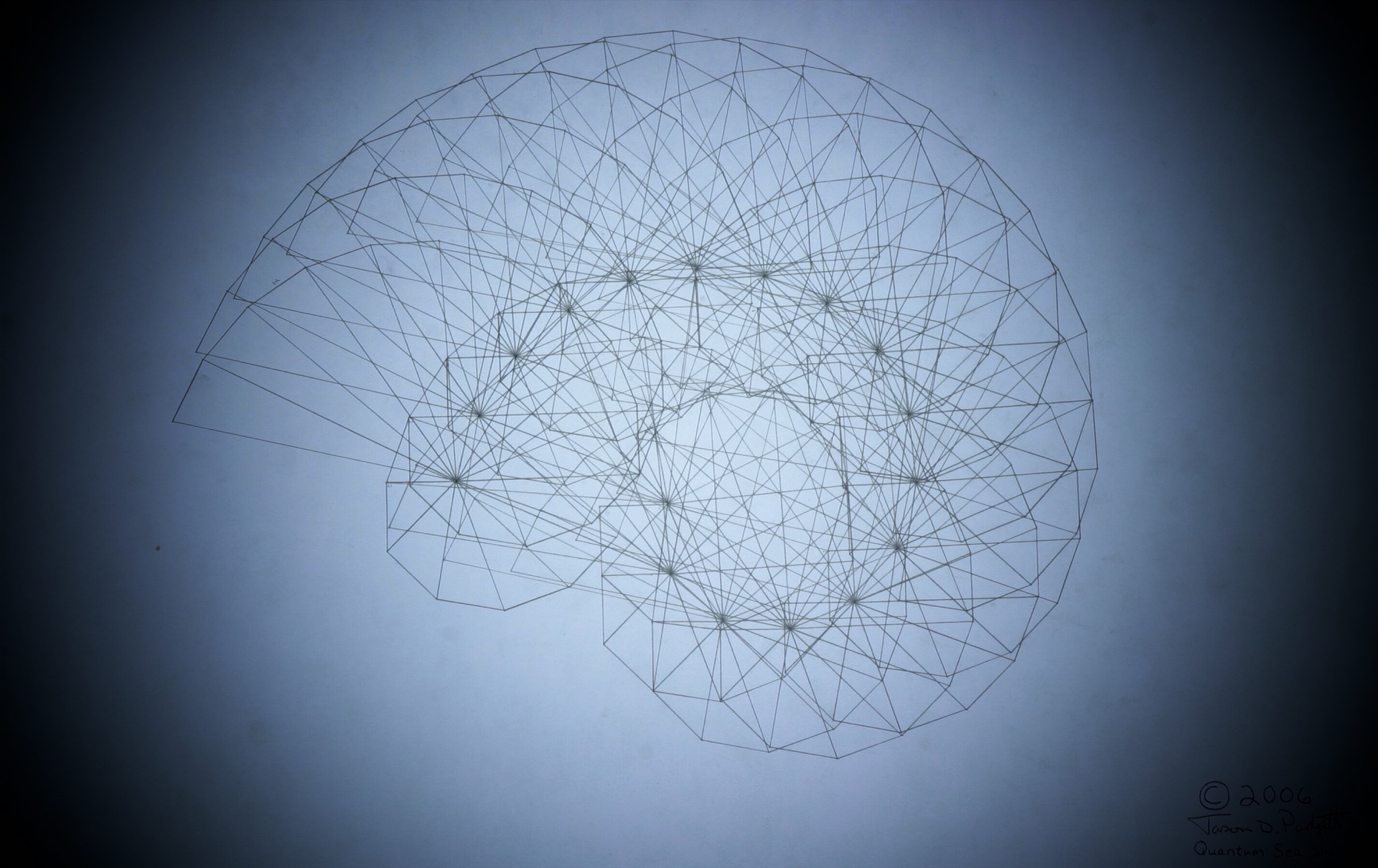Jason Padgett was exactly as one would expect someone who has no interest in school to be. He was only interested in parties and bars and was a magnet for both fun and trouble. That’s how he ended up being expelled, which didn’t affect him too much. However, getting beaten savagely changed his life forever, in the most unimaginable way possible.
On September 13th, 2002, while leaving a bar with only his leather vest covering his bare chest, Jason was assaulted by two individuals and left unconscious in front of his friends. The reason for the altercation was the vest, which the attackers wanted to take.
When he regained consciousness, Jason was a totally different man. Not because of the post-traumatic stress disorder he developed after the attack, or the tendency to social isolation he was starting to form. Something much less common happened to him.
The next day, after the incident, geometry flooded Jason’s life. Nothing around him looked the same. Everything was deconstructed into thousands and thousands of elements that he had never noticed before. The flowing water, the light reflected off the hood of the car, the shapes of the most mundane objects became complex compositions. Even numbers became graphic patterns in his brain. Jason saw the geometric “bricks” from which all the things around him were built.
Today, when he stirs the cream in his coffee with a teaspoon, Jason no longer sees the coffee or the cream, but the perfect spiral, the fractal. “Suddenly, it’s not just my morning cup o’ joe, it’s geometry speaking to me,” Jason told the NY Times.
Padgett is one of the less than 50 globally documented cases of savant syndrome development following a blow to the head. His world has been invaded by the incredible mathematical models, which he even draws, to the amazement of everyone who sees them. Jason is one of the few people in the world who can draw approximations of fractals—repetitive geometric patterns that represent the geometric “atoms” of everything we touch. His Facebook page is fascinating for those who want to find out more about the new world in which Jason Padgett lives.
Even his dreams are geometry. “I can barely remember a time when I saw the world the way most everyone else does,” the 43-year-old said reflexively. The former stranger to the simplest requirements of mathematics declared on another occasion: “I see shapes and angles everywhere in real life.”

The implications of the change
Jason is now concerned with the purest branch of mathematics: number theory. The concept of infinity disturbs Jason, now that his mind is able to decompose everything he sees into smaller and smaller units that approach the threshold of Planck length, which is considered to be the smallest unit of measurement in the universe. In other words, if there is anyone who can see, with his mind, the smallest things in the existing universe, much smaller than atoms, it is Padgett.
Jason’s brain has, meanwhile, become an object of study for the scientific community. Computed tomography scanning revealed intense activity in the left hemisphere of his brain, where we know the centre of mathematical skills to be. The most active part of his brain, however, is the left parietal lobe, a part responsible for integrating and homogenizing the information received by the individual through several senses. The temporal lobe, which coordinates visual memory and the processing of perceptions and emotions, showed more intense activity than the rest of Padgett’s brain.
Researchers don’t know whether the changes in Jason’s brain are permanent or not, but they would most likely opt for the positive answer, says Berit Brogaard, a philosophy professor at the University of Miami.
The dormant genius within us
“I believe I am living proof that these powers lie dormant in all of us.” This is the belief that Padgett notes in his memoirs, published this year (Struck by Genius: How a Brain Injury Made Me a Mathematical Marvel). Brogaard thinks the same.
Darold Treffert, who treated Kim Peek, the source of inspiration for the movie “Rain Man”, also examined Jason and concluded that nothing had been added or created in his brain as a result of the trauma. Rather, “factory-installed software” and “genetic memory” had been activated, Treffert says.
Could we one day hope to find a solution that unleashes all these latent abilities? President Barack Obama’s BRAIN Initiative, with a budget of $300 million in the first two years, aims to answer this particular question.
The co-chair of the project, Dr William Newsome, from Stanford University, told the Huffington Post that, in medical history, there is precedent for individuals developing new and specialized cognitive abilities after a brain injury. These individuals have contributed to important discoveries in the field of neurology. Due to the case of Phineas Gage, the role of the frontal cortex in cognitive control was discovered, and later, the way memory was understood to work changed after a patient underwent experimental surgery to get rid of epilepsy. That’s why Dr Newsome thinks it’s possible to discover new information about how our brains work through cases like Padgett’s.
How much we have learned, how little we know
Despite the astonishing scientific progress made in recent decades, the way in which the brain, and the human body in general, are able to perform is still a huge mystery to us. We are uncovering the tip of the iceberg and are discovering more and more, with the enthusiasm of children who feel the potential of digging in the sand, to search for shells of different sizes and colours. But even when we formulate universal theories, each of us must be aware that we have no guarantee that the things we see and perceive now will not be seen completely differently, in light of future discoveries, whether they are accidental or not.
Padgett’s case not only shows us how little we know about some things but also how many things we don’t know at all. This is vital to remember.
We live in a complex world that can barely be grasped by the mind, even by a mind like Jason Padgett’s. Reverence for this complexity is a necessity and a new exhortation not to remove God from the realm of our lives and pursuits. Science must continue to investigate, identify patterns, explain phenomena, and apply theories in practice for us to continue to develop technologically and to make the lives of those living on the planet easier. However, in the meantime, we have every reason to marvel at a complexity that speaks not of chance, but of a God of infinity, who created a fascinating world, with incredibly constant laws, which can only fill us with admiration.
A necessary warning
Phrenology was, at some point, a branch of science that analyzed the connection between the concrete physical appearance of the brain and its abilities. However, the risks of such an approach are obvious. A story like that of Jason Padgett may lead to the conclusion that alterations in the shape of the skull, regardless of their nature, could lead to improvements in brain activity and could encourage some to ‘try this at home’.
One should, however, emphasize that the chances of acquiring savant syndrome following a head blow are practically zero (and theoretically almost zero). While tens of millions of people are diagnosed with head contusions each year, only a little more than 40 cases of acquiring the syndrome following trauma are known in the entire history of medical records. Clearly, these cases are completely inexplicable exceptions for the time being, and impossible to reproduce through a controlled experiment.
Overwhelmingly, head injuries lead to permanent mental disorders and neurological deficits, with amnesia or seizures being the most common of these. Therefore, it is completely wrong to think, even jokingly, that a head injury would likely precipate someone’s “awakening.”



















